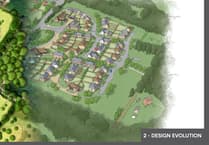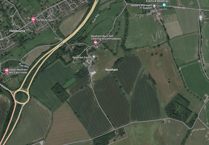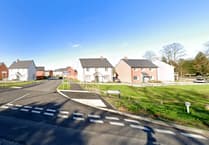Residents and parish councils have strongly opposed plans for more than 500 homes just three miles north of Farnham.
Hart district councillors will decide on June 15 whether to approve full planning permission for 185 homes and outline permission for an additional 126 in the countryside between Church Crookham and Dogmersfield.
The site, on land north of Netherhouse Copse, is known locally as ‘Grove Farm’ and has already had 217 homes approved from previous planning applications, bringing the total to 528.
Council officers have recommended granting permission, despite all of the public comments, totalling 44, registering strong opposition to the plans.
A clerk to Dogmersfield Parish Council said: “Traffic generated by the proposed additional 185 dwellings will have an unacceptable impact on highways safety on the country roads through Dogmersfield and the surrounding villages.
“Dogmersfield primary school is on this route. There is no parking associated with the school and drop off traffic causes serious safety issues when the route is over-capacity. Traffic regularly ‘backs up’ for half a mile over Pilcot Bridge and onto Pilcot Road.”
Andrew Robinson, a Fleet resident, added: “Hart District has already had more than its share of housing thrust upon it and no explanation has been forthcoming as to why we should have yet more, especially in the face of increased traffic congestion, oversubscribed schools, reduced access to healthcare and a general lack of infrastructure.”
Council documents conclude that “the proposal is considered to be a sustainable form of development” after a detailed assessment of the impacts.
If approved, the council will impose a 40 per cent affordable housing condition in accordance with the district’s land supply requirements.
The site could see a mix of dwelling types and sizes for families, first-time buyers and those looking to downsize.
Over the past 30 years, the parish of Crookham village between north Farnham and Fleet has grown rapidly from approximately 200 dwellings in the late 1980s to more than 1,600 today, with a consequent population increase to almost 5,000 people.




